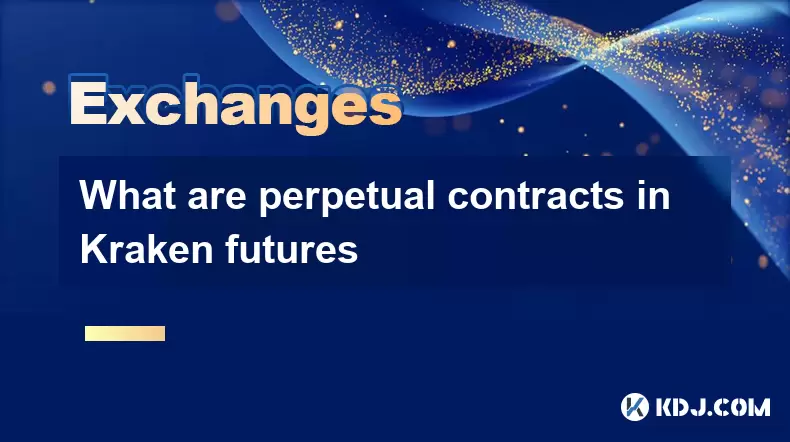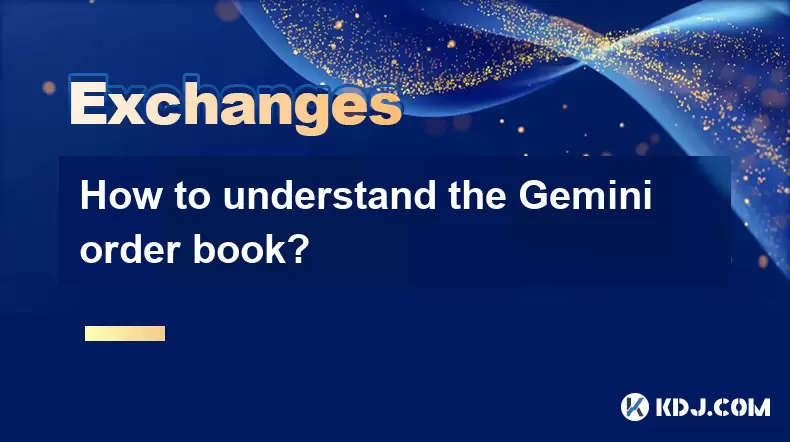-
 Bitcoin
Bitcoin $114400
1.32% -
 Ethereum
Ethereum $3499
2.20% -
 XRP
XRP $2.922
4.26% -
 Tether USDt
Tether USDt $0.0000
0.03% -
 BNB
BNB $752.6
1.53% -
 Solana
Solana $161.8
1.64% -
 USDC
USDC $0.9999
0.01% -
 TRON
TRON $0.3267
1.32% -
 Dogecoin
Dogecoin $0.1991
3.02% -
 Cardano
Cardano $0.7251
3.29% -
 Hyperliquid
Hyperliquid $38.32
3.36% -
 Stellar
Stellar $0.3972
7.58% -
 Sui
Sui $3.437
2.74% -
 Chainlink
Chainlink $16.29
3.65% -
 Bitcoin Cash
Bitcoin Cash $545.3
3.70% -
 Hedera
Hedera $0.2482
7.49% -
 Ethena USDe
Ethena USDe $1.001
0.03% -
 Avalanche
Avalanche $21.40
2.02% -
 Toncoin
Toncoin $3.579
1.56% -
 Litecoin
Litecoin $109.3
2.20% -
 UNUS SED LEO
UNUS SED LEO $8.951
-0.18% -
 Shiba Inu
Shiba Inu $0.00001220
2.75% -
 Polkadot
Polkadot $3.613
2.99% -
 Uniswap
Uniswap $9.173
3.78% -
 Monero
Monero $302.6
2.62% -
 Dai
Dai $0.0000
0.00% -
 Bitget Token
Bitget Token $4.320
1.52% -
 Pepe
Pepe $0.00001048
3.40% -
 Cronos
Cronos $0.1314
4.33% -
 Aave
Aave $259.4
3.54%
What are perpetual contracts in Kraken futures
Kraken Futures offers perpetual contracts like BTC/USD and ETH/USD with no expiry, leverage up to 50x, and an 8-hourly funding rate to align prices with the spot market.
Aug 04, 2025 at 06:21 am

Understanding Perpetual Contracts on Kraken Futures
Perpetual contracts are a type of derivative financial instrument offered on Kraken Futures that allow traders to speculate on the price movements of cryptocurrencies without an expiration date. Unlike traditional futures contracts, which settle on a predetermined date, perpetual contracts do not expire, enabling traders to hold positions indefinitely. This makes them particularly attractive for both short-term and long-term trading strategies. Kraken Futures supports perpetual contracts for major cryptocurrencies such as BTC/USD, ETH/USD, and other crypto-to-fiat pairs.
These contracts are settled in USD and are typically traded with leverage, meaning traders can control larger positions using a smaller amount of capital. The underlying value of a perpetual contract is tied to the spot price of the corresponding cryptocurrency. To ensure the contract price stays close to the spot price, Kraken implements a funding rate mechanism, which is critical in maintaining price alignment between the perpetual market and the real-world asset.
How Funding Rates Work in Kraken Perpetuals
The funding rate is a periodic payment exchanged between long and short position holders to tether the perpetual contract price to the spot market. If the perpetual contract trades above the spot price, the funding rate becomes positive, meaning longs pay shorts. Conversely, if the contract trades below the spot price, the rate turns negative, and shorts pay longs.
Funding payments occur every eight hours on Kraken Futures. The exact rate is calculated based on the difference between the mark price (a smoothed average of the contract price) and the index price (the average spot price across major exchanges). This mechanism discourages prolonged deviations and ensures market efficiency. Traders can view the current funding rate directly on the Kraken Futures trading interface, often displayed as an annualized percentage.
It is important to note that funding payments are only incurred when a position is held at the time of settlement. Traders who open and close positions within the same funding interval do not pay or receive funding. Monitoring the funding rate is crucial, especially for those holding leveraged positions over extended periods, as frequent or high funding costs can erode profits.
Leverage and Margin Management on Kraken Futures
Kraken Futures allows traders to use leverage when trading perpetual contracts, enabling them to amplify their exposure. Leverage options vary depending on the specific contract and market conditions, with common ratios including 2x, 5x, 10x, and up to 50x for certain pairs. Higher leverage increases both potential gains and risks, including the likelihood of liquidation.
When opening a leveraged position, traders must deposit initial margin, which is a percentage of the total position value. Kraken uses a cross-margin system by default, where the entire account balance acts as collateral for open positions. However, users can switch to isolated margin, which limits risk to a specific amount allocated per position.
Margin requirements include:
- Maintenance margin: The minimum equity needed to keep a position open.
- Liquidation price: The price at which the position is automatically closed if losses deplete the margin below maintenance levels.
- Mark price vs. last price: Kraken uses the mark price (not the last traded price) to calculate liquidation, protecting against price manipulation.
Traders can adjust leverage dynamically through the Kraken Futures dashboard, either increasing or decreasing it based on risk tolerance and market outlook.
Placing a Perpetual Contract Trade on Kraken
To trade perpetual contracts on Kraken, users must first ensure they have a verified futures account and sufficient funds in their futures wallet. The following steps outline the process:
- Log in to your Kraken account and navigate to the Kraken Futures trading interface.
- Select the desired perpetual contract, such as BTC/USD Perp.
- Choose between limit, market, or stop order types based on trading strategy.
- Set the order size in either contracts or USD value.
- Adjust leverage using the slider or input field before placing the order.
- Review the estimated liquidation price and margin requirements.
- Confirm and submit the order.
After submission, the position appears in the open positions tab. Traders can monitor unrealized P&L, entry price, and funding status in real time. Closing a position can be done manually by placing an opposing order or by setting a take-profit or stop-loss order for automated execution.
Fees and Cost Structure for Perpetual Trading
Kraken Futures employs a maker-taker fee model for perpetual contracts. Makers, who provide liquidity by placing limit orders that do not immediately execute, receive lower fees or rebates. Takers, who remove liquidity by executing against existing orders, pay higher fees.
Fee rates are tiered based on 30-day trading volume and can be found in Kraken’s official fee schedule. Typical taker fees range from 0.02% to 0.05%, while maker fees can be as low as 0.00% or even negative (rebate). These fees are applied to both opening and closing transactions.
Additional costs to consider:
- Funding payments, which are not fees but periodic transfers between counterparties.
- No expiration or rollover fees, since perpetuals do not expire.
- No separate settlement fees—all settlements are handled internally.
Users are encouraged to use Kraken’s fee calculator or review their transaction history to track cumulative costs.
Risks and Risk Mitigation Strategies
Trading perpetual contracts involves significant risks, primarily due to leverage and volatility. A small adverse price movement can trigger liquidation, especially with high leverage. To mitigate these risks:
- Use stop-loss orders to limit downside exposure.
- Avoid over-leveraging; consider using lower leverage during high-volatility periods.
- Monitor funding rates to avoid holding positions during periods of high positive or negative funding.
- Regularly check margin balance and consider adding funds to avoid margin calls.
- Utilize isolated margin to contain losses to a specific position.
Kraken provides a liquidation preview tool that shows the price at which a position would be closed, helping traders make informed decisions.
Frequently Asked Questions
Q: Can I trade Kraken perpetual contracts with USDT or other stablecoins?
No, Kraken Futures perpetual contracts are settled exclusively in USD. All deposits, withdrawals, and profit/loss calculations are conducted in USD. Stablecoins like USDT cannot be used directly as margin for perpetuals on this platform.
Q: How often is the funding rate applied, and when is it charged?
The funding rate is applied every eight hours, at 00:00 UTC, 08:00 UTC, and 16:00 UTC. The payment is only charged if you hold a position at the exact moment of settlement. Positions opened and closed between intervals do not incur funding.
Q: What happens if my position gets liquidated?
If the mark price reaches your liquidation price, Kraken automatically closes the position to prevent further losses. The system uses a liquidation engine that aims to minimize slippage. Any remaining margin after covering losses is returned to your account.
Q: Is there a minimum trade size for perpetual contracts on Kraken?
Yes, Kraken enforces a minimum order size, which varies by contract. For example, the BTC/USD Perp requires a minimum of 0.01 contracts. This information is visible in the contract specifications on the trading interface.
Disclaimer:info@kdj.com
The information provided is not trading advice. kdj.com does not assume any responsibility for any investments made based on the information provided in this article. Cryptocurrencies are highly volatile and it is highly recommended that you invest with caution after thorough research!
If you believe that the content used on this website infringes your copyright, please contact us immediately (info@kdj.com) and we will delete it promptly.
- Kaspa, HBAR, and Cold Wallet: A New York Minute on Crypto's Latest Moves
- 2025-08-04 09:11:54
- Ethereum Whale Watch: Selling Pressure and Price Volatility
- 2025-08-04 09:11:54
- XRP ETF Mania: Teucrium's Crypto Triumph and the Altcoin Frenzy
- 2025-08-04 09:30:13
- Crypto Wallet Scam: A $900K Loss & What You Need to Know
- 2025-08-04 09:35:13
- Dogecoin's Wild Ride: Elliott Wave, Stochastic RSI, and What's Next, Ya Know?
- 2025-08-04 09:40:12
- Shiba Inu (SHIB), Crypto Investments, and the Meme Coin Evolution: What's the Deal?
- 2025-08-04 09:45:17
Related knowledge

How to set and manage alerts on the Gemini app?
Aug 03,2025 at 11:00am
Understanding the Gemini App Alert SystemThe Gemini app offers users a powerful way to stay informed about their cryptocurrency holdings, price moveme...

How to use the Gemini mobile app to trade on the go?
Aug 04,2025 at 09:14am
Setting Up the Gemini Mobile AppTo begin trading on the go using the Gemini mobile app, the first step is installing the application on your smartphon...

What to do if you forgot your Gemini password?
Aug 04,2025 at 03:42am
Understanding the Role of Passwords in Gemini AccountsWhen using Gemini, a regulated cryptocurrency exchange platform, your password serves as one of ...

What are the websocket feeds available from the Gemini API?
Aug 03,2025 at 07:43pm
Overview of Gemini WebSocket FeedsThe Gemini API provides real-time market data through its WebSocket feeds, enabling developers and traders to receiv...

How to manage your portfolio on Gemini?
Aug 03,2025 at 10:36am
Accessing Your Gemini Portfolio DashboardTo begin managing your portfolio on Gemini, you must first log in to your account through the official websit...

How to understand the Gemini order book?
Aug 02,2025 at 03:35pm
What Is the Gemini Order Book?The Gemini order book is a real-time ledger that displays all open buy and sell orders for a specific cryptocurrency tra...

How to set and manage alerts on the Gemini app?
Aug 03,2025 at 11:00am
Understanding the Gemini App Alert SystemThe Gemini app offers users a powerful way to stay informed about their cryptocurrency holdings, price moveme...

How to use the Gemini mobile app to trade on the go?
Aug 04,2025 at 09:14am
Setting Up the Gemini Mobile AppTo begin trading on the go using the Gemini mobile app, the first step is installing the application on your smartphon...

What to do if you forgot your Gemini password?
Aug 04,2025 at 03:42am
Understanding the Role of Passwords in Gemini AccountsWhen using Gemini, a regulated cryptocurrency exchange platform, your password serves as one of ...

What are the websocket feeds available from the Gemini API?
Aug 03,2025 at 07:43pm
Overview of Gemini WebSocket FeedsThe Gemini API provides real-time market data through its WebSocket feeds, enabling developers and traders to receiv...

How to manage your portfolio on Gemini?
Aug 03,2025 at 10:36am
Accessing Your Gemini Portfolio DashboardTo begin managing your portfolio on Gemini, you must first log in to your account through the official websit...

How to understand the Gemini order book?
Aug 02,2025 at 03:35pm
What Is the Gemini Order Book?The Gemini order book is a real-time ledger that displays all open buy and sell orders for a specific cryptocurrency tra...
See all articles

























































































